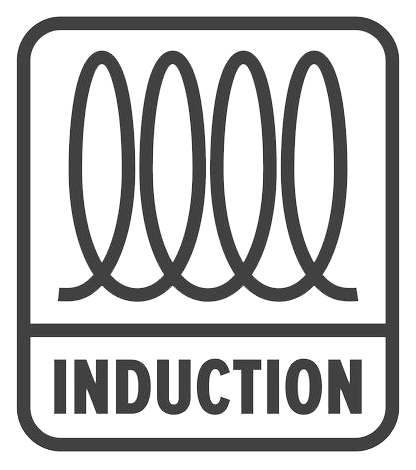About induction cooking
Induction cooking is an advanced technology that utilizes magnetized copper coils to directly heat your pots and pans.
With residential and commercial cooking applications, induction is a powerful, highly controllable technology that is more precise, safe, and clean than the alternatives. Induction belongs in your climate-friendly kitchen.
In this video, Chef Mark Duesler of the Food Service Technology Center demonstrates the benefits of induction cooking as he makes the perfect chocolate banana crepe.
Energy efficiency
Unlike traditional gas burners or electric elements, induction elements, or “hobs”, transfer heat directly to the cookware without heating the cooking surface or wasting heat into the surrounding space. This makes induction much more energy efficient than gas or traditional electric resistance.
Speed & control
Induction cooktops deliver faster heating and are more consistent in reaching and holding your desired temperatures. Whether quickly bringing six quarts of water to a boil or gently simmering a sauce at just the right temperature, induction excels in all facets of home cooking.
Health & safety
Gas burners are a significant source of indoor air pollution; converting to induction can improve the air quality in your home. Induction cooktops also have built-in safety features: they automatically shut down if you leave a pan on too long or if you remove a pan from its surface. Induction surfaces also stay cool while cooking, decreasing the risk of fire or burns.
Kitchen comfort
Excessive heat spillage from gas burners and electric elements requires ample kitchen ventilation to keep kitchens cool, which most residential hoods struggle to provide. With induction, only the pot or pan is heated so no excess heat is spilled into the kitchen space. As a result, less ventilation is required to keep your kitchen cool and comfortable.
Cleaning and Maintenance
Induction cooktops use sleek, heat-resistant glass-ceramic tops to conceal and protect the copper coils underneath. These smooth surfaces require little maintenance and clean up. Most food spills will not burn onto the cool surface, so a simple wipe down with a damp towel is usually all that’s needed.
Cookware
Pots and pans must be made of magnetic material to be compatible with induction cooktops. The best types of cookware for induction include: stainless steel (most types), cast-iron, enameled porcelain cast iron, and carbon steel. Hold a magnet to your existing cookware’s base to verify its compatibility. Cookware made of glass, aluminum, or copper (without magnetized base layers) will not work on induction.
When you shop for new pots and pans, look for this induction ready symbol:

Installation
Induction appliances come in a variety of form factors: table-top single hob units, built-in countertop cooktops, rangetops, etc. Generally, residential induction cooktops and rangetops require a dedicated, grounded 208/240V circuit protected with 40- or 50-amp breakers, while a standalone, single hob unit may only need 120V at 15A. Check the manufacturer’s specification sheet for your model’s electrical requirements and have a professional electrician determine what your home’s existing electrical service can support.
Additional resources
To learn more and access additional resources, visit: switchison.org
You may be eligible for a rebate if you replace a gas stove with an induction range or cooktop. Find out more: bayren.org